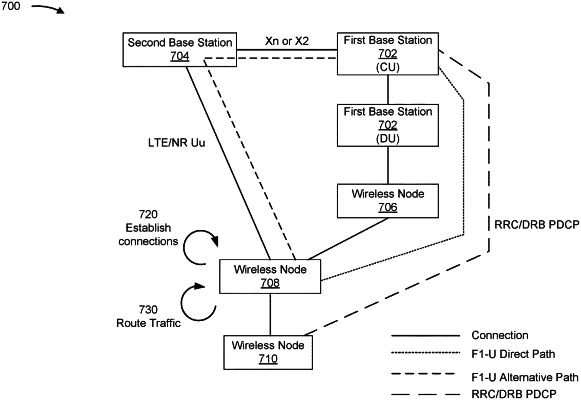| CPC H04W 76/15 (2018.02) [H04W 24/02 (2013.01); H04W 28/0808 (2020.05); H04W 28/0917 (2020.05); H04W 36/08 (2013.01); H04W 76/12 (2018.02)] | 30 Claims |

|
1. A wireless node for wireless communication, comprising:
a memory; and
one or more processors, coupled to the memory, configured to:
receive path information indicating an F1-U direct path and an F1-U alternative path, the path information identifying a child wireless node or a bearer established for the child wireless node;
establish, based on the path information, a first connection between the child wireless node and a first base station and a second connection between the child wireless node and the first base station via a second base station, wherein the first connection is the F1-U direct path and the second connection is the F1-U alternative path, the path information enabling the wireless node to map user-plane traffic onto the F1-U direct path or the F1-U alternative path; and
forward at least a portion of the user-plane traffic between the child wireless node and the first base station via the second connection and the second base station.
|